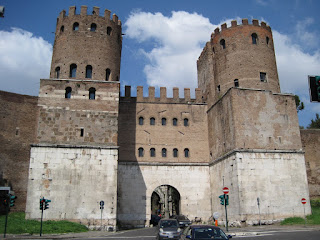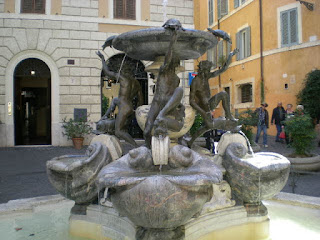So our attempt to go to the Appian Way on Sunday were foiled by the Rome Marathon. Because of this, the whole bus system was shut down for most of the day, at least in the area where we wanted to go. This was, of course, irritating, but if you have ever been to Italy you know that something is always going to go wrong, and you'd better have a plan B. In our case, the plan B was going to see the Baths of Caracalla . It made sense since we were basically right next to them anyway, having travelled to the Circus Maximus metro stop to catch the bus. The baths were a truly amazing attraction. The scale of these baths was just staggering. It is said that the construction took 9,000 workers five years. More pictures of the baths are below, because I forgot that blogger puts the photos in the wrong order. After we visited the baths, we walked around the Aventine hill . This was reportedly a working class neighborhood in ancient Rome, but it is very swanky now. On the way ...










